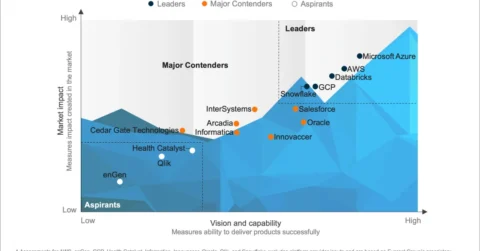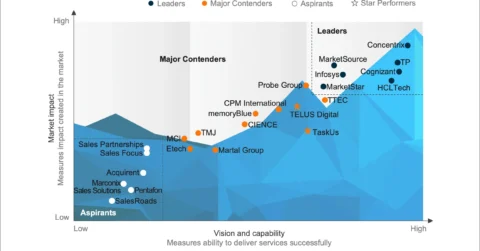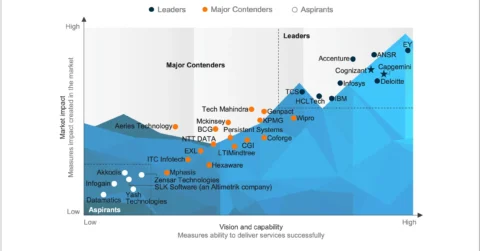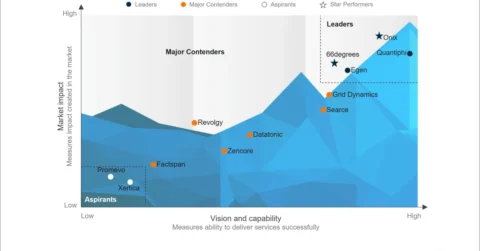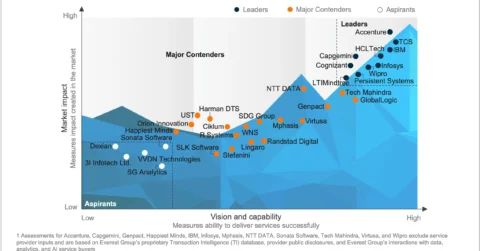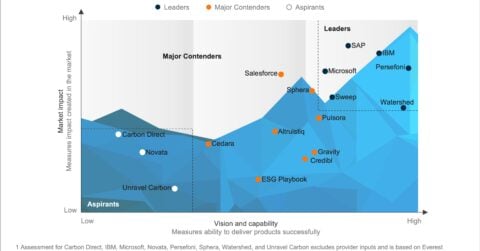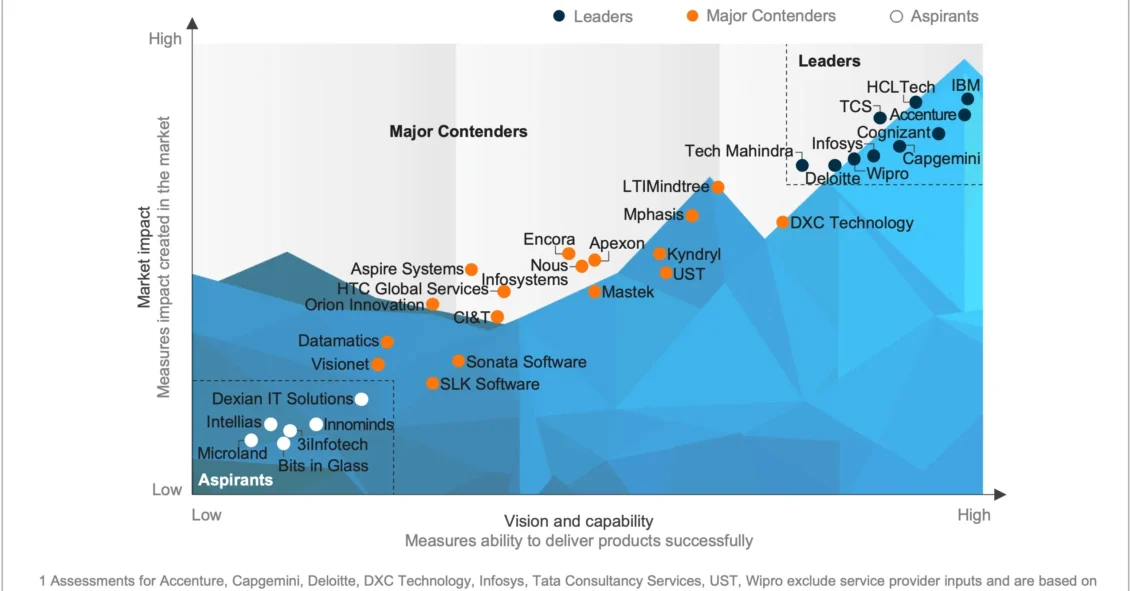
Enterprises worldwide are racing to unlock AI-driven productivity, insight, and growth, but most still run mission-critical applications on legacy, siloed environments that cannot support modern AI pipelines. As priorities shift from cost takeout and cloud adoption to full AI readiness, Application Transformation Services (ATS) for AI enablement have emerged as a strategic imperative. This wave of transformation goes beyond incremental modernization, focusing instead on re-architecting application estates to unlock the true potential of AI.
ATS for AI enablement is centered on refactoring legacy code, migrating to cloud-native, API-first architectures, and building governed, real-time data flows that can support gen AI copilots, agentic automation, and advanced analytics at scale. The market is now at an inflection point; enterprises that succeed in building scalable, AI-ready application stacks are beginning to pull ahead of peers, turning their technology architecture into a source of sustainable competitive differentiation.
-
Application Transformation Services for AI-enablement PEAK Matrix® Assessment 2025
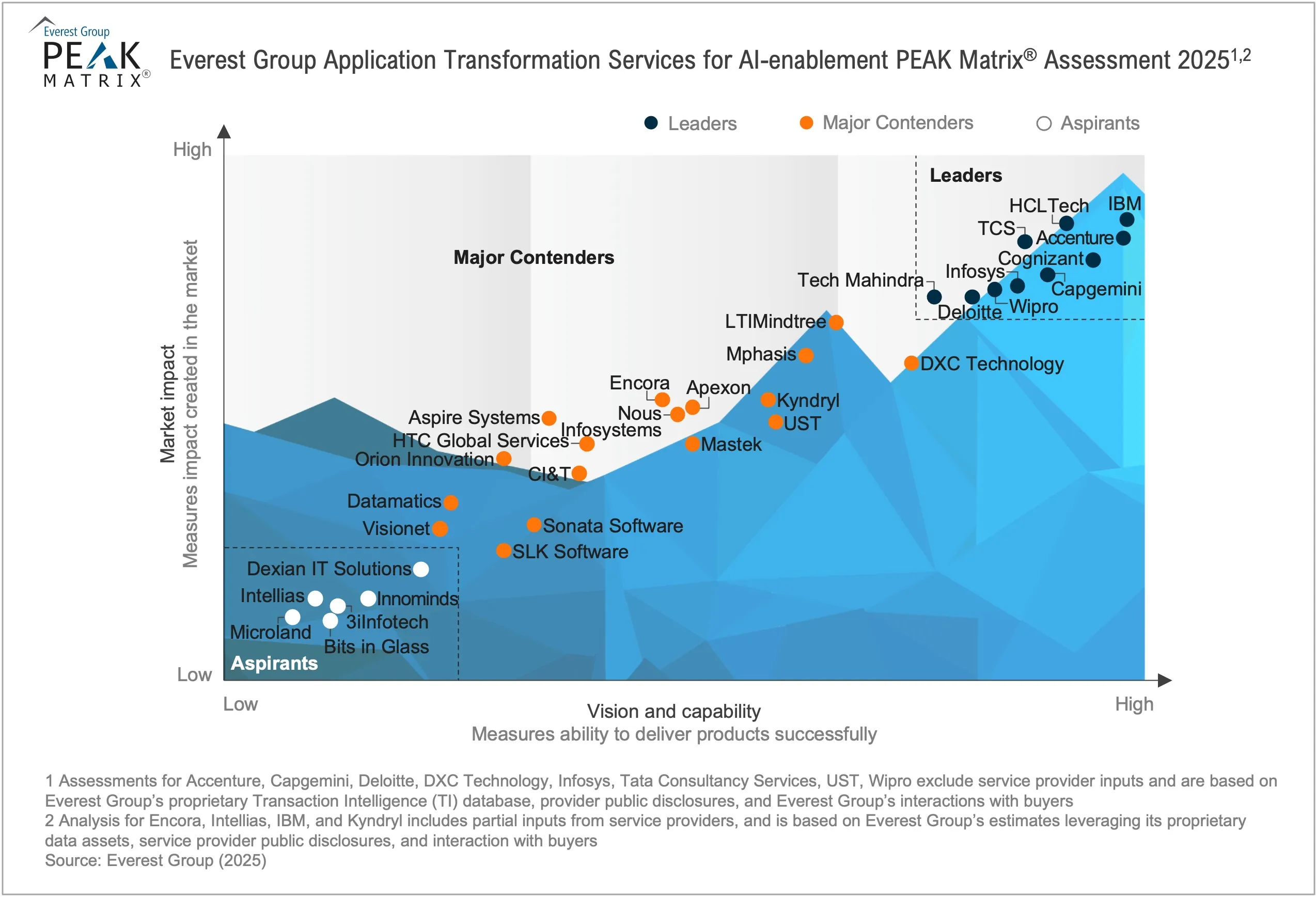
This report assesses 33 service providers in the Application Transformation Services for AI-enablement PEAK Matrix® Assessment 2025, categorizing them as Leaders, Major Contenders, and Aspirants. It serves as a practical guide for CIOs, CTOs, application engineering leaders, and sourcing teams to structure RFPs, evaluate partner fit, and prioritize investments, and it provides providers with clear benchmarks to calibrate strategy and offerings.
Scope
- Geography: global
- Industry: all industries
- Service: application transformation services
Contents
- Scope of the evaluation
- Market trends
- Provider landscape analysis
- Key buyer considerations and key buyer takeaways
- Provider evaluations
READ ON
What is the PEAK Matrix®?
The PEAK Matrix® provides an objective, data-driven assessment of service and technology providers based on their overall capability and market impact across different global services markets, classifying them into three categories: Leaders, Major Contenders, and Aspirants.
